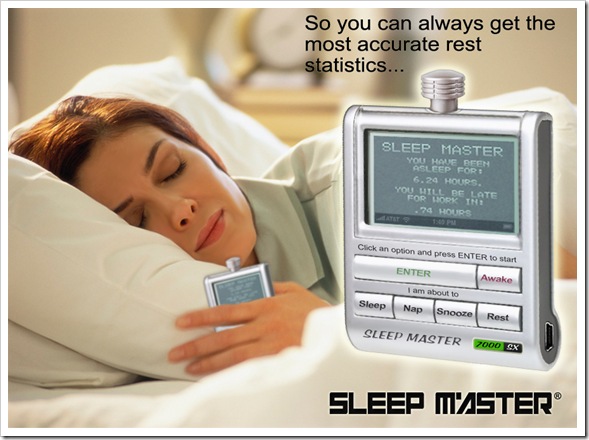
The Sleep Master 7000SX: It captures and Tweets all your sleep stats while you snooze!
In his book, “The Diamond Age,” Neal Stephenson classifies technologists as belonging to one of two categories: (1) those who hone existing ones and (2) those who forge and create new ones.
There is a fundamental difference between how ad-hoc assemblers and software crafters approach building a product. Ad hoc assemblers tend to start with the technology and the solutions it offers. They speak in terms of using a framework, language, or protocol to solve a problem. They frequently make statements like “the next version of X will solve the problem of Y”. Ad hoc assemblers who often suffer from myopic vision will solve customer needs first by boxing some existing technologies together and then by shoehorning a GUI on top of it. The sum of the feature and functionality will be driven entirely by the framework of the underlying technology.
This almost always results in marginal user experience and product performance. The solution isn’t designed for ease of use. It’s not even intended to solve any concrete problem. Its primary purpose is to act as a vehicle for marketing hype and sales. You can recognize these products by the emphasis they place on mile-long lists of features, most of which are poorly implemented and are of little commercial value.
It’s a simple value proposition: it is more important for some neat technologies to be shipped (the latest buzz is cloud computing and social networks) than for products to be useful. Very few great products are designed this way.
Software crafters, on the other hand, understand that real people will consume their product, and every decision about its design is made not only with a specific user in mind but also the specific problems the user needs to solve in mind. This and only this drives the choice of platform, language, communication protocol, or database.
Your customers are no different than the people who are looking to buy a specific tool for a job. To deliver the right product functionality without getting lost in the technology jungle, you need to develop an understanding of how successful products are developed in other fields.
Manufacturers of tools and appliances all go through the same steps in balancing technology, requirements and usability. You can learn a lot from the successes of products like the iPod by recognizing that when we buy a product, we almost never care about unnecessary “fluff” features (like an SM integrated timer that can capture four different types of sleep statistics). Rather, what we want is valuable features that perform well.
© Copyright 2010 Yaacov Apelbaum All Rights Reserved.

If you don’t mind me asking, where did you get the image of the Sleep Master? I love the graphics on your blog!
Hi O’Kith
Thank you for the kind words. I produce the images myself using Photoshop, Illustrator, and Lightwave 3D. If you are looking for specialty images, you can try stock image sites like iStockphoto.com
Yaacov